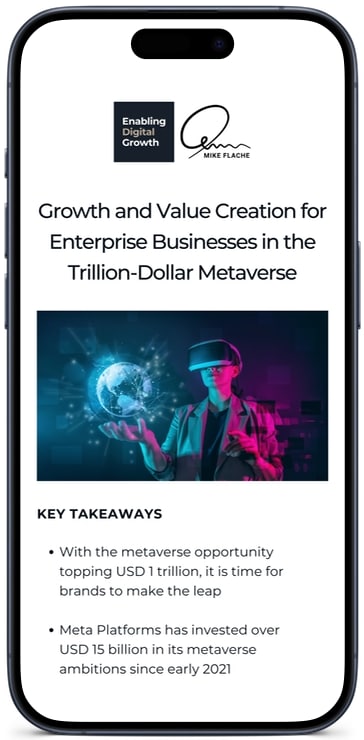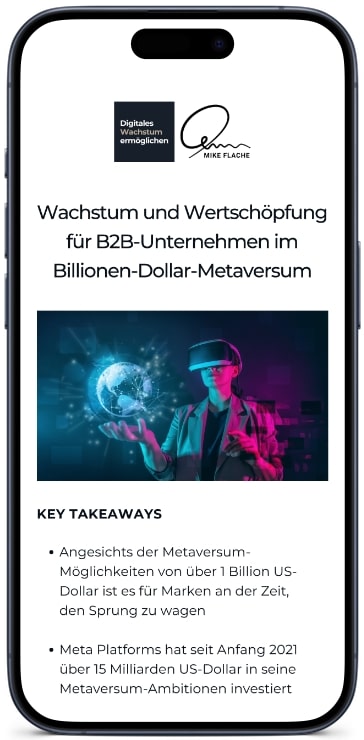What can entrepreneurs, shareholders, and executives do to drive digital innovation in traditional industry? I have been hearing this question a lot recently; often enough, in fact, to write an article about the topic and make my thoughts on it available more widely than to just a select few conversation partners. But let’s start at the beginning.
I appreciate the opportunity to engage in personal discussions with representatives of the traditional industry sectors: entrepreneurs, shareholders, board members, and executives. They come from mechanical engineering, electrical engineering, the construction industry, and the plastic industry. Their companies range from small to large, with staff numbering from 100 to 10,000.
To get an old prejudice out of the way upfront: industrial sectors are not ignoring the digital transformation. Not by any means. All of my conversation partners are well aware that the transformation is inevitable.
All of them are concerned with the same question: Where can digital innovation start in a company that has grown over the course of decades? And how can we implement the first building blocks of success quickly and with a focus on the ROI?
Looking outwards is important…
There are many different ways and methods of promoting digital innovation. On a fundamental level, it can be done from the outside or from the inside.
A typical “outside” approach is the hiring of an external consultant — or entire teams of consultants, as is often the case in larger companies. I will discuss the advantages and disadvantages of this strategy in one of my next articles.
Another option: industrial companies can cooperate with or acquire shares in strategically relevant startups. Some even establish their own corporate venture capital firms.
Looking at the giants of the digital age, this seems to be a pretty effective way of propelling innovation — the well over 200 acquisitions undertaken by Alphabet, Microsoft and Cisco respectively certainly “feel” like a best practice.
…but not always the right way to start
I do not believe that startup shares are the best way for medium-sized companies to embark on their digital journey. Especially when companies are at the beginning of their digital innovation process.
Past experiences with this approach are often limited, and the challenges are great. This applies to the acquisition itself and the subsequent post-merger process. In short: the (actual) innovation objectives frequently fall victim to this process.
Imagine the obstacles that arise when two completely different company cultures are forced to work together. I have witnessed this more than once. What works like a charm on paper often doesn’t work in daily business.
What’s left are the disappointed expectations of all stakeholders and the unrealized potential of a highly promising business model. The sad conclusion: a formerly innovative venture is integrated into its holding company, vanishing into irrelevance as a “failed experiment”.
There are also companies that have successfully taken this step, such as the steel trader Klöckner & Co. According to their own statements, digital platforms are the key sales driver in Q1 2021. Compared to the same quarter of the previous year, the company’s digital sales rose by ten percentage points to over 45 percent (Q1 2020: 35 percent).
Technology creates value…
All of the above begs the question: why don’t we promote digital innovation “from the inside?” From within the company itself. Using the valuable assets we already have.
Sounds sensible, doesn’t it? But as stakeholders and managers, we had better not get too enthusiastic: while this approach is more closely connected to our own organizations, it is not necessarily easier.
First of all, we must meet one important requirement: companies need a technological foundation that makes processes of digital innovation possible in the first place. This should be more than the good old Excel sheet and the rusty company Intranet.
We are talking about real collaboration
Establish an online platform that connects ALL members of your company, including employees in the headquarters, the overseas branches and the various home offices. Information needs to travel smoothly, feedback needs to get to its destination fast. New ideas and concepts must flow between all parties involved, regardless of time and space and without creating yet another data silo. All in one system, including IT security.
…if the company culture is right
If that is granted, all else follows. And this is where it gets exciting: there is a thin line between the success and failure of such an initiative. What is the decisive factor, then?
Technology? Lean, automated processes? Certainly, these are important in combination. But neither is enough by itself. My conversations with industry executives, however, have shown me that some of them view this as a holy grail.
Brave new (digital) world — not just easy, but also really comfortable
Unfortunately, this won’t work. Instead, innovation is up to the companies, in general — and us, the stakeholders, entrepreneurs and managers, in particular. Our task, first and foremost, is to create the right conditions that facilitate digital innovation.
To do this, we must be completely open towards entirely new approaches. We need to recognize their benefit and promote them in our role as visionaries. In short: we need to live innovation credibly. Pure lip service is worthless.
Revolutionary thinking, evolutionary implementation
Advancing our own company culture is one of our greatest tasks. And we need to do it quickly, because the market never waits. Neither do our employees, by the way.
The study Aligning the Organization for Its Digital Future, carried out by MIT and Deloitte, cuts to the chase five years ago: one in three managers would leave their company if their expectations in the digitalization process are not met.
If we want to recruit and keep the best talents out there in this decade, freedom is key. We need to provide this: our employees need creative possibilities; they need to be empowered, not controlled. “Allowed” to act out the impossible.
This approach will motivate (almost) anyone to come up with completely new ideas and question established truths — turn them upside down, even. To “disrupt” the old deliberately and constructively. And, finally, to share their ideas and concepts with others in the company.
All of this can be started with a small team and then developed into a dedicated organizational unit: a “pilot department” with its own business objectives, simplified processes and a high level of agility, suitable to be rolled out in the entire company as a model of success once the time is right.
Wishful thinking or reality?
Not much of a miracle cure? Of course not: it all sounds perfectly logical. And this is precisely what confuses me. So many industry initiatives lag behind their true potential, while others aren’t started in the first place.
They will tell you: “We have tried this, it didn’t work.” Or: “We have too many employees who are blocking this step. We won’t try.”
Is that really the starting point?
If you look deeper inside the company and actually talk to the employees, the situation becomes more transparent: most of them are demoralized by the constant talking about grand visions that never take off.
New ideas are nipped in the bud. The margin of error is precisely zero. The result: a lack of motivation and declining productivity. Innovation impulses from within the own ranks: none. This failure comes at a high price.
Final thoughts
Speed is the focus
One thing is certain: companies exist within markets that move at breakneck speed. There is no end in sight, and there may never be. The challenge of working for a company in this environment is just as great as that of managing one. We, as stakeholders and managers, should remind ourselves of this fact regularly.
Motivation as the key to success
Digital innovation, indeed any kind of innovation, cannot easily materialize without motivation. And to motivate our employees, we need a lot more than the usual management parameters: budgets, objectives, bonuses and the coveted smartphone.
Attitude and environment are the foundation
An appreciative environment that grants people freedom to develop their own ideas is considerably more motivating — and not just for Generation Y, Generation Z, or even younger employees. One final note: we need to appreciate failure within the process of innovation as part of a greater whole.
Mindset shapes change
Admittedly, living this mindset is not that easy for many of us. As this would give us a good chance to develop digital innovation for our markets from within our own companies.
Conclusion
Let’s get back to the original question, then. What is the best way to promote digital innovation in industrial companies? I will stick to my initial answer with the addition of one important point:
Trust your employees. And ask them to disrupt the company.




